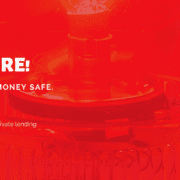Private Lending Warning #3…PUSHING THE VALUE
Categories: Blog Posts
Private Lending Warning #3…PUSHING THE VALUE
The value of the real estate is your number one protection for your loan. This is the asset behind all the money you’re lending.
It’s the real asset that’ll keep you protected.

But what if that asset isn’t worth as much as the borrower claims?
In all the years I’ve been lending, it still surprises me how far off some people are in their valuation of properties. So many will compare their run-down property to a completely remodeled house and think they would have the same sale price/value. Or they show you a comparable of homes close to their own that are from a higher end subdivision.
For example, my brother lives in a house close to our current office. His home is what I would call a mid-priced home for this area. Within a mile of his home, there are three distinctive subdivisions all separated by a single street. You can tell by driving through the properties they are at different price levels based on the materials used for construction, lot sizes, and amenities.
In this area, the same size house could range from $400k (entry level) to $500k (mid-area), to $750k (nicest subdivision). This is a huge difference in value and what an owner can sell their property for in the future.
Let’s look at an example for a loan of $400k on these properties and evaluate the level of security for the lender (you).
For a home in an entry level subdivision ($400k), your loan will be at the full value of the property. In our opinion, this would be a high-risk investment. What would happen if you had to take the property back and sell it? You would probably lose money with all the costs to foreclose and sell the property. You’d likely walk away from this deal in the red.
For a home in the mid-level subdivision ($500k), you have decent protection with over 30% equity above the loan you have on the property. So, the risk might be worth it.
For the final home in the high-level subdivision ($750k), your security is almost at 50% of the value. So, you’re fairly safe.
Which security would you prefer? Most likely, you’d opt for the higher amount of equity to protect your money.
The problem is, we don’t always know the value of a home. If someone doesn’t know an area very well, they might go online and be blind to the differences between entry, mid, and high-level housing.
It’s also easy for thieves to exaggerate the value and put you in a lien position that doesn’t cover all of your loan.
Exaggerating value is a huge issue.
It shows that the borrower is a thief or that they’re so new to investing, they don’t understand real estate valuation.
How do you protect yourself from over valuation?
- If you can, always drive by the house or through the neighborhood to see if there are distinct areas that are different subdivisions.
- Hire a professional to value the property for you.
- Find an appraiser you can hire or;
- Locate a realtor who works in the area and pay them to value the property for you.
Let the experts come up with the value and trust them. They are unbiased and understand the different types of properties and neighborhoods. It’ll be worth your time and peace of mind to spend a few dollars to get professional advice.
Above all else, do not trust the value from the borrower. It doesn’t necessarily mean they are trying to lie to you. They simply might not know the value of the property.
Rely on your own due diligence and that of the professionals you hire to protect your loan.
Value does matter.
Check out Warning #1 or Warning #2
Private Lending Warning #3












Leave a Reply
Want to join the discussion?Feel free to contribute!